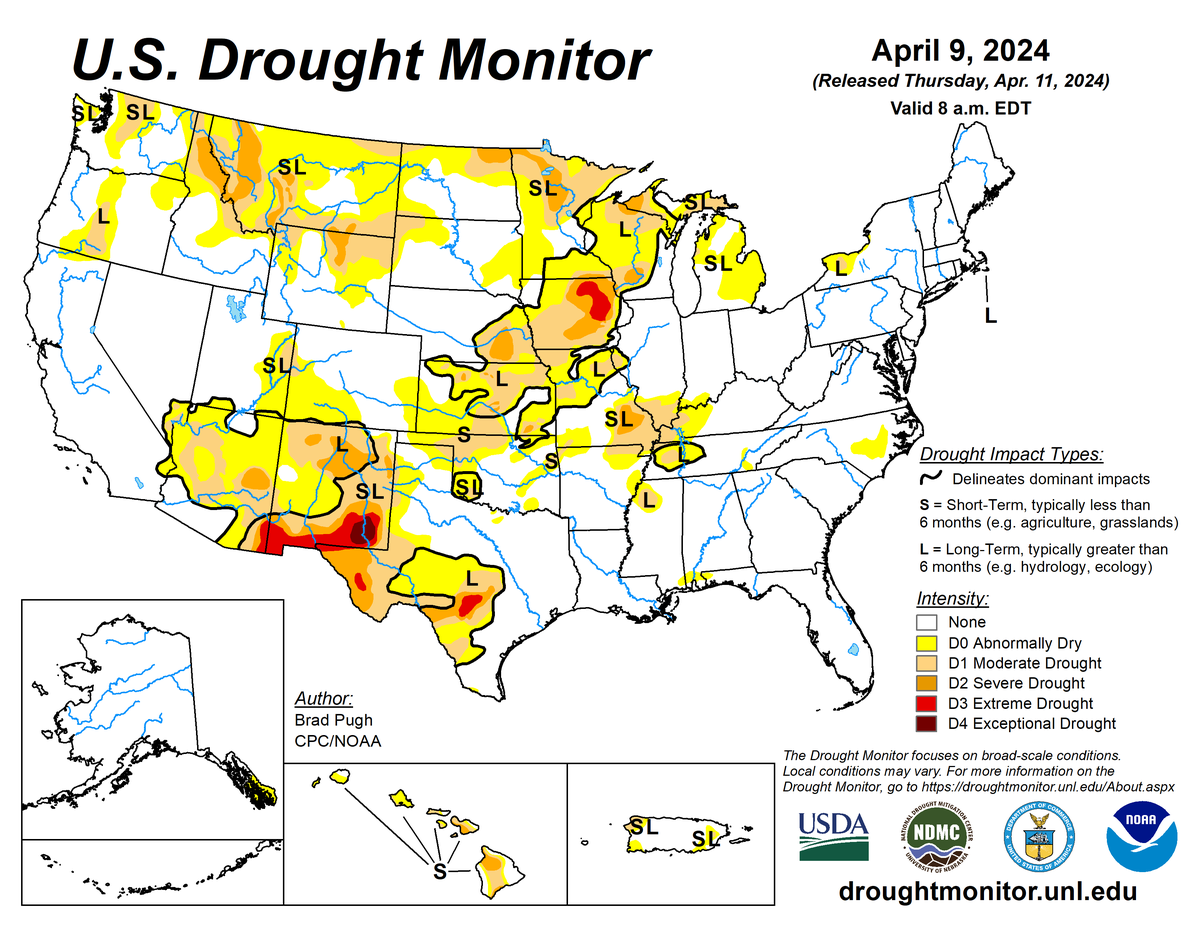
According to the April 9, 2024 U.S. Drought Monitor (USDM), moderate to exceptional drought covers 14.7% of the United States including Puerto Rico, a decrease from last week’s 15.1%. The worst drought categories (extreme to exceptional drought) slightly decreased from 1.0% last week to 0.9%.
Several strong weather systems tracked across the contiguous U.S. (CONUS) during this U.S. Drought Monitor week (April 3–9). They consisted of low-pressure troughs and closed lows in the upper levels of the atmosphere, and were manifested as low-pressure centers and cold fronts at the surface. These weather systems spread rain and snow across parts of the West and across the northern tier states, with rain from Texas to the East Coast. Precipitation amounts were above normal across parts of California and the Pacific Northwest into western parts of the northern Plains, over parts of the western Great Lakes, across most of the Northeast, and in parts of the southern Mississippi and Tennessee Valleys to the Southeast. Other parts of the West, Midwest, and Southeast, and large parts of the Great Plains, were drier than normal for the week. The fronts and low-pressure systems brought cooler-than-normal air over most of the West and from the Ohio Valley to the Southeast, while the week averaged warmer than normal across the Plains and Great Lakes.
It was a drier-than-normal week across parts of Puerto Rico and the U.S. Virgin Islands and the lee parts of the Hawaiian Islands. The year to date has been drier than normal over southern parts of the Alaska panhandle. Dry weather continued across most of the U.S.-Affiliated Pacific Islands (Micronesia).
Drought or abnormal dryness contracted or was reduced in intensity in parts of the West, Midwest, northern Plains, and Puerto Rico. Drought or abnormal dryness expanded or intensified in parts of the central and southern Plains to Mid-Mississippi Valley. Nationally, contraction exceeded expansion, so the nationwide moderate to exceptional drought area decreased this week.
The last time the CONUS drought coverage was this low was on May 12, 2020.
Abnormal dryness and drought are currently affecting over 51 million people across the United States including Puerto Rico—about 16.6% of the population.

In addition to Drought.gov, you can find further information on the current drought on this week’s Drought Monitor update at the National Drought Mitigation Center
The most recent U.S. Drought Outlook is available from NOAA’s Climate Prediction Center. The U.S. Department of Agriculture’s World Agriculture Outlook Board also provides information about the drought’s influence on crops and livestock
For additional drought information, follow #DroughtMonitor on Facebook and Twitter



